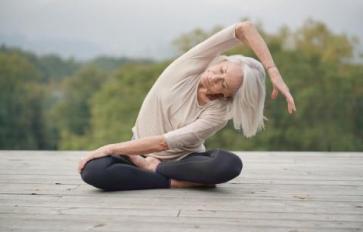
“Everybody needs beauty as well as bread, places to play in and pray in, where nature may heal and give strength to body and soul,” naturalist and author John Muir said. The benefits of spending time in the great outdoors are widely known by nature lovers and are also documented in many studies, often through participants’ subjective reports of feeling calmer and happier. New research in 2019 published in the journal Frontiers in Psychology tracked the benefits of immersion in nature by measuring two chemicals in people’s saliva that relate to stress in the body. It found that 20 minutes in a natural area was enough to lower stress, and that 20-30 minutes was the ideal “dose” of mother nature.
“Our ultimate goal is to articulate a ‘nature prescription’ for use by healthcare providers as a preventive, self-administered health care treatment for mental well-being that is low in cost and effective in everyday settings,” the authors write. They also state, “This line of inquiry is timely in light of expanding urbanization and rising healthcare costs.” Some healthcare providers around the world are already writing these kinds of prescriptions for a nature experience (NE), and civic and nonprofit groups in the U.S., Canada, the UK, Australia, and other areas are bringing versions of the “nature wellbeing” approach to communities.
To obtain their results, the researchers required 36 urbanites to have self-designed nature experiences of at least 10 minutes, three times per week, for two months. While reading, conversating, aerobic exercise, and use of technology were not allowed, the participants got to choose when and where to immerse themselves in the natural world, as long as it was "anywhere outside that, in [their] opinion, made them feel like they had interacted with nature."
Every two weeks, the researchers tested the saliva of the participants before and after they took a “nature pill.” Two chemicals were measured: cortisol (often known as the ‘stress hormone’) and alpha-amylase, an oral enzyme which has been shown to become more active in response to stress. Testing these stress markers revealed that a NE of at least 20 minutes reduces stress by 21 percent in terms of cortisol and 28 percent in salivary amylase. When the duration of the NE rises to between 20 and 30 minutes, “the gain in benefit is most efficient”—it continues to increase after that point, but more slowly. The authors hope both healthcare professionals and everyday people can benefit from this increased understanding of how much time in nature is a particularly helpful amount. They also see their findings as a jumping-off point for more exploratory research.
"Our experimental approach can be used as a tool to assess how age, gender, seasonality, physical ability and culture influences the effectiveness of nature experiences on well-being. This will allow customized nature pill prescriptions, as well as a deeper insight on how to design cities and wellbeing programs for the public,” University of Michigan Associate Professor and lead author of the research Dr. MaryCarol Hunter said.
Another 2019 study, published in the International Journal of Environmental Health Research, also found about 20 minutes to be an optimum amount of time outdoors. In this case, spending 20 minutes in an urban park led to an “improvement in life satisfaction” scores, regardless of the degree of physical activity involved. Lead author and University of Alabama at Birmingham professor Hon K. Yuen said in a statement, “There is increasing pressure on green space within urban settings. Planners and developers look to replace green space with residential and commercial property.” Preserving and creating green places within cities is a crucial way to make sure people everywhere can get their nature pills.








